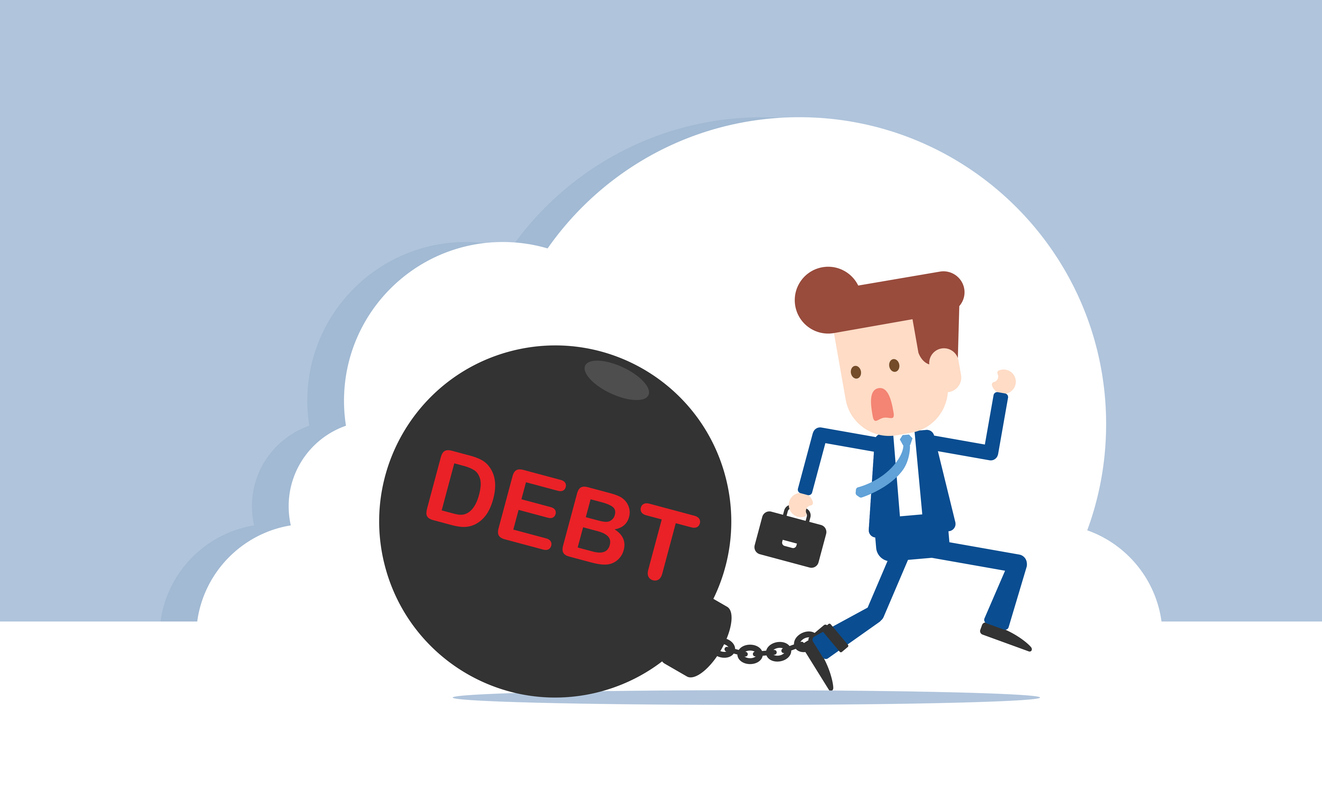As of August 2025, total U.S. consumer debt has surpassed $17 trillion, with credit card balances alone exceeding $1.1 trillion, according to recent Federal Reserve data. In an era of economic uncertainty, where inflation persists and job markets fluctuate, many Americans find themselves grappling with overwhelming debt. For people drowning in unsecured debts like credit cards, medical bills, or personal loans, two primary relief options emerge: bankruptcy and debt settlement. Both promise a path to financial recovery, but they differ significantly in process, outcomes, and long-term implications. Bankruptcy involves a court-supervised process that can discharge or restructure debts, offering legal protections but with lasting credit repercussions. Debt settlement, on the other hand, is a respected negotiation strategy where creditors agree to accept less than the full amount owed, often facilitated by third-party companies allowing them to avoid court.
Comparing Debt Settlement vs Bankruptcy
Choosing between debt settlement and bankruptcy and requires careful consideration of person’s financial situation, including income stability, debt amount (typically over $10,000 for viability), and tolerance for credit damage. Bankruptcy might suit those with insurmountable debts and low assets, while debt settlement appeals to individuals who can afford partial repayments but want to sidestep the stigma of bankruptcy. However, misconceptions abound—bankruptcy isn’t always a “last resort,” and debt settlement isn’t always cheaper or less damaging. This article delves into the pros and cons of each, explores key similarities like partial debt repayment in Chapter 13 bankruptcy, addresses the 10-year credit reporting mark for certain bankruptcies, examines high costs such as attorney fees, and presents two real-world case studies to illustrate practical outcomes. By understanding these nuances, you can make an informed decision tailored to your circumstances in 2025’s evolving economic landscape.
Understanding Debt Settlement: Process and Mechanics
Debt settlement involves negotiating with creditors to pay a lump sum less than the owed amount, typically 30-50% off, in exchange for forgiving the rest. Often handled by for-profit companies, the process starts with enrolling debts (usually $7,500+ unsecured) and stopping payments to build leverage—funds are saved in a dedicated account until sufficient for offers. Negotiations can take 24-48 months, with settlements paid from accumulated savings.
Unlike bankruptcy, it’s informal, no court involvement, and creditors aren’t obligated to accept. Fees are performance-based, averaging 15-25% of enrolled debt (e.g., $2,000-$5,000 on $20,000 debt), plus setup costs. In 2025, with rising delinquencies, settlements are more common, but success rates hover at 40-60%, per industry reports. Forgiven debt is taxable as income, potentially adding IRS burdens.
Pros and Cons of Debt Settlement
Debt settlement’s appeal lies in reducing principal without court. Pros include avoiding bankruptcy’s public nature and long credit stain—settled accounts drop off reports after 7 years from delinquency. You retain control, keeping assets, and it can resolve debts faster for those with lump sums. Flexibility allows partial settlements if finances change, and it’s less stigmatized.
Cons outweigh for many: No legal protection means creditors can sue during negotiations, leading to judgments or garnishments. Credit scores plummet from missed payments (up to 100-150 points), and forgiven amounts trigger taxes (e.g., $10,000 forgiven = $2,000+ tax bill at 22% bracket). High fees erode savings—net relief might be only 18% after costs—and no guarantees; failed settlements leave you worse off with accrued interest. Scams abound, with some firms charging upfront despite FTC bans.
Understanding Bankruptcy: Types and Process
Bankruptcy is a federal legal process designed to provide debtors with relief from overwhelming financial obligations. Under the U.S. Bankruptcy Code, individuals primarily file under Chapter 7 or Chapter 13, each with distinct mechanisms. Chapter 7, often called “liquidation bankruptcy,” involves selling non-exempt assets to pay creditors, with remaining unsecured debts discharged. It’s suitable for low-income individuals who pass a means test, comparing their income to state medians. The process typically lasts 4-6 months, culminating in debt erasure for qualifying obligations like credit cards and medical bills, but not student loans or taxes.
Chapter 13, known as “wage earner’s bankruptcy,” allows debtors with regular income to reorganize debts into a 3-5 year repayment plan. Here, filers propose a plan to the court, paying a trustee who distributes funds to creditors. Payments are based on disposable income—after essential expenses—and must cover priority debts (e.g., taxes, child support) in full, while unsecured creditors might receive only a portion. For instance, if your disposable income allows for $500 monthly payments over 60 months, that’s $30,000 toward debts, potentially settling them at cents on the dollar. This mirrors debt settlement in requiring partial repayment, but with court oversight ensuring fairness. Eligibility requires debts under $2.75 million (secured) and $465,275 (unsecured) as of 2025 adjustments.
The filing process begins with credit counseling, followed by petition submission, automatic stay (halting collections), and court hearings. Costs include filing fees of $338 for Chapter 7 and $313 for Chapter 13, plus attorney fees averaging $1,500-$3,500 for Chapter 7 and $3,000-$6,000 for Chapter 13 due to its complexity. High attorney fees stem from document preparation, court appearances, and plan negotiations, but they provide expertise to avoid pitfalls like plan denials.
Pros and Cons of Bankruptcy
Bankruptcy offers powerful advantages but comes with drawbacks. On the positive side, it provides immediate relief through the automatic stay, stopping wage garnishments, lawsuits, and harassing calls. Debts are legally discharged, giving a true fresh start—Chapter 7 erases most unsecured debts entirely, while Chapter 13 protects assets like homes from foreclosure by catching up on arrears. It also rebuilds credit faster than expected; many filers see scores improve within 1-2 years post-discharge by establishing positive habits. Legally binding outcomes ensure creditors can’t pursue settled debts, and it’s often cheaper long-term than prolonged settlements.
However, cons are significant. Bankruptcy is public record, potentially affecting employment or housing. Chapter 7 risks asset liquidation, though exemptions protect essentials like $27,900 in home equity (federal 2025 figures). Credit impact is severe: Chapter 7 stays on reports for 10 years, Chapter 13 for 7, hindering loans or high-interest rates initially. Chapter 13 demands strict budgeting during repayment, with failure leading to dismissal. High upfront costs, including attorney fees averaging $2,500 nationally in 2025, deter some, though installment plans exist. Stigma and ineligibility for repeat filings (8 years for Chapter 7) add to the downsides.
Comparing Bankruptcy and Debt Settlement: Key Differences and Similarities
Both options address unsecured debts but diverge in structure. Bankruptcy offers certainty—discharge is guaranteed if approved—while settlement relies on creditor goodwill. Costs vary: Bankruptcy’s attorney fees ($1,000-$6,000) plus filings are upfront but finite; settlement’s 15-25% fees scale with debt, often exceeding $5,000 for large balances. A striking similarity is partial repayment: Chapter 13 requires paying back some debt via plans (e.g., 10-70% of unsecured), akin to settlement’s reduced payouts, but enforced by court for 3-5 years. This contrasts Chapter 7’s full discharge.
Credit impacts differ markedly. Bankruptcy lingers longer—10 years for Chapter 7 from filing date, per Fair Credit Reporting Act, meaning until 2035 for a 2025 filing—delaying major loans. Settlement damages credit for 7 years but allows quicker recovery if managed well. Tax-wise, bankruptcy discharges are non-taxable; settlements aren’t. Ultimately, bankruptcy suits severe cases with low income; settlement fits moderate debts with savings potential.
Case Studies: Real-Life Examples
Case Study 1: Sarah’s Chapter 13 Success Amid Repayment Demands
Sarah, a 42-year-old teacher in Ohio, faced $45,000 in credit card debt after a divorce, with monthly payments exceeding $1,200 on a $55,000 salary. Opting for Chapter 13 in early 2024, she proposed a 5-year plan paying $600 monthly, covering 40% of unsecured debts—similar to a settlement but court-protected. Attorney fees totaled $4,200, financed through the plan. The automatic stay halted collections, allowing her to keep her home. By mid-2025, she’d paid $18,000, discharging the rest. Credit dipped to 520 initially but rebounded to 650 within a year via secured cards. Compared to settlement, which might have cost 20% fees ($9,000) and risked lawsuits, Chapter 13 provided structure, though the 7-year report mark looms until 2031.
Case Study 2: Mike’s Debt Settlement Ordeal Versus Bankruptcy Alternative
Mike, a 35-year-old freelancer in Texas, owed $30,000 across cards after job loss. He chose settlement in 2023, enrolling with a firm charging 22% fees ($6,600). Stopping payments built a $12,000 fund over 18 months, settling at 45% off—but two creditors sued, adding $2,000 in legal costs. Net savings: $10,500 after fees and taxes on $13,500 forgiven. Credit fell to 550, recovering to 620 by 2025. Had he filed Chapter 7, costing $1,800 in fees, debts would discharge in months with no repayment, but the 10-year mark would affect his 2033 home purchase plans. Settlement avoided that but prolonged stress.
Choosing the Right Path between Debt Settlement vs Bankruptcy in 2025
Bankruptcy and debt settlement both alleviate debt burdens but suit different profiles. If you need immediate protection and can handle long-term credit hits, bankruptcy—especially Chapter 13 for those with income—offers reliability, despite high attorney fees and the 10-year reporting for Chapter 7. For flexible, non-court options with partial repayments, settlement works, but beware fees and uncertainties.
12 Times When to Choose Debt Settlement Over Bankruptcy Chapter 13
When facing overwhelming unsecured debt, individuals often weigh Chapter 13 bankruptcy against debt settlement. Chapter 13 involves a court-mandated 3-5 year repayment plan, where debtors with regular income repay a portion of debts under supervision. Debt settlement, conversely, negotiates reduced lump-sum payments with creditors, typically forgiving 40-60% of the balance, without court involvement. While Chapter 13 offers legal protections like an automatic stay on collections, debt settlement can be preferable in specific scenarios due to flexibility, lower potential repayments, and avoidance of judicial oversight. Here are 12 examples where debt settlement negotiations emerge as the wiser choice.
- Irregular Income Streams: If your earnings fluctuate, such as freelance work, adhering to Chapter 13’s rigid monthly payments risks plan dismissal. Debt settlement allows saving for lump sums at your pace, offering flexibility for unstable finances.
- Desire for Privacy: Chapter 13 filings are public records, potentially affecting professional reputations or security clearances. Settlement remains private, avoiding court documents that could be accessed by employers or clients.
- Ability to Make Lump-Sum Payments: With accessible savings or family support for one-time payouts, settlement enables quicker resolutions (often 24-48 months) without committing to extended plans, ideal if you can negotiate settlements swiftly.
- Debts Exceeding Chapter 13 Limits: If unsecured debts surpass $465,275 or secured exceed $1.4 million (2025 thresholds), you’re ineligible for Chapter 13. Settlement has no such caps, allowing negotiation on high balances.
- Preference for Faster Debt Resolution: Chapter 13 mandates 3-5 years, but successful settlements can wrap up in under two years if creditors cooperate, suiting those eager to rebuild credit sooner.
- Retaining Full Financial Control: Unlike Chapter 13’s court-approved budget scrutiny, settlement lets you manage negotiations and payments independently or via agencies, preserving autonomy over assets and spending.
- Lower Upfront Costs: Attorney fees for Chapter 13 average $3,000-$6,000, plus filing costs. Settlement fees (15-25% of debt) are performance-based and often less burdensome initially, especially for DIY negotiators.
- Targeting Specific Debts: If only certain creditors are problematic, settlement allows selective negotiations, whereas Chapter 13 requires including all debts in the plan, potentially overcomplicating simpler situations.
- Avoiding Dismissal Risks: Non-compliance in Chapter 13 (e.g., missed payments) leads to case dismissal, restarting collections. Settlement has no such formal failure; unsuccessful talks simply maintain status quo without added penalties.
- Potentially Less Repayment Overall: In high-income Chapter 13 cases, you might repay 70-100% of debts. Settlement often secures 30-50% reductions, resulting in lower total outlays if negotiations favor you.
- Preserving Future Bankruptcy Options: During Chapter 13, you can’t file Chapter 7 for discharge. Settlement keeps doors open for future filings if circumstances worsen, providing a safety net.
- Minimal Asset Involvement: If you have non-exempt assets but prefer no trustee oversight, settlement avoids liquidation risks or plan adjustments based on equity, focusing solely on debt negotiations.
Ultimately, in many instances, debt settlement suits proactive individuals with manageable debts who value flexibility over protections. Consult experts, as success rates vary (40-60%), and consider tax implications on forgiven amounts. In 2025’s economy, with rising delinquencies, timely choice can accelerate recovery.



